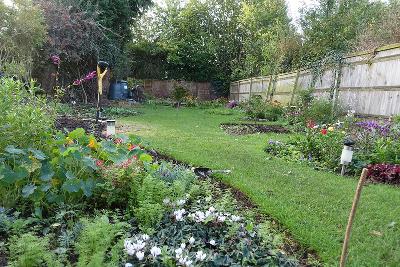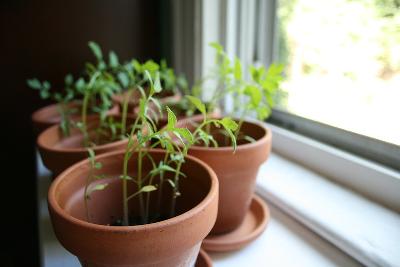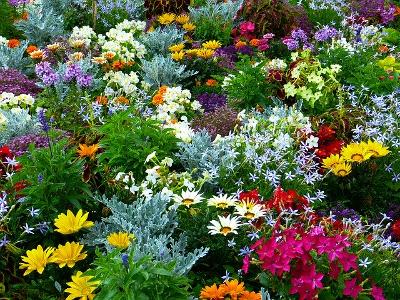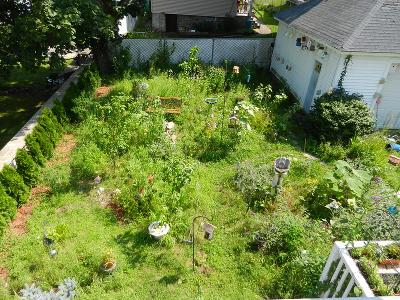- + PLACES TO GO
- + THINGS TO DO
- + WINE & DINE
- + LODGING
- + DAY TRIPS
- + EVENTS
- + MAPS
- + TRAVEL BLOGS & MORE
- Site Search
Growing a Garden: A New Adventure Right In Your Own Backyard
posted by Teresa Farrell at 2020-05-20 21:33:00
With spring in full swing and summer on the way, now is the perfect time to think about planting a backyard garden. Even if you don’t have a green thumb, or you’re new to the whole gardening world, there’s no need to be intimidated! There are simple ways to get started that offer beautiful and delicious benefits, and plenty of plants can thrive just about anywhere, regardless of where you are in Upstate New York.
 There are many different types of gardens you can create, but for many, a vegetable garden is the first to come to mind. There’s something so satisfying about biting into a juicy tomato that you grew with your own two hands or enjoying a summer salad with veggies fresher than anything you could find at the store. Plus, the process itself is as useful as the end product: cultivating the garden is a mindful activity that can reduce stress and even serve as a teaching tool for kids as they follow the progression from seed to sprout to supper table. You can grow staples like green beans, zucchini, cucumbers, lettuce, tomatoes, carrots, peppers, onions, strawberries and more, saving money and trips to the store, and you may even end up with a bumper crop to share with friends and family.
There are many different types of gardens you can create, but for many, a vegetable garden is the first to come to mind. There’s something so satisfying about biting into a juicy tomato that you grew with your own two hands or enjoying a summer salad with veggies fresher than anything you could find at the store. Plus, the process itself is as useful as the end product: cultivating the garden is a mindful activity that can reduce stress and even serve as a teaching tool for kids as they follow the progression from seed to sprout to supper table. You can grow staples like green beans, zucchini, cucumbers, lettuce, tomatoes, carrots, peppers, onions, strawberries and more, saving money and trips to the store, and you may even end up with a bumper crop to share with friends and family.If it still seems a little overwhelming, here is a beginner's step-by-step guide to help you on your way to planting and harvesting your own vegetable garden. There is nothing like it!
 But veggies aren’t the only delicious things you can grow in your own backyard-- or even closer. Herb gardens are extremely useful and can be surprisingly easy to cultivate, even if you don’t have much space to work with. In fact, you can find tutorials all over the internet about how to grow you own herb garden right on your kitchen windowsill. Basics like mint, basil, cilantro, rosemary, thyme, chives, parsley and more—which can be expensive at the grocery store and have a limited shelf life once you get them home—can be ready and waiting right at your fingertips to bring a fresh and flavorful quality to everything that comes out of your kitchen. Some are more temperamental than others, but it’s worth the time and effort to find the right balance to keep them thriving once you get used just how easy and delicious dinnertime can be when you have fresh herbs at the ready all the time.
But veggies aren’t the only delicious things you can grow in your own backyard-- or even closer. Herb gardens are extremely useful and can be surprisingly easy to cultivate, even if you don’t have much space to work with. In fact, you can find tutorials all over the internet about how to grow you own herb garden right on your kitchen windowsill. Basics like mint, basil, cilantro, rosemary, thyme, chives, parsley and more—which can be expensive at the grocery store and have a limited shelf life once you get them home—can be ready and waiting right at your fingertips to bring a fresh and flavorful quality to everything that comes out of your kitchen. Some are more temperamental than others, but it’s worth the time and effort to find the right balance to keep them thriving once you get used just how easy and delicious dinnertime can be when you have fresh herbs at the ready all the time.Beginners Guide > And Here is another Great Guide to get you familiarized with different soils, the types of gardens you can build, tools you'll need, and how to take care of your New Garden.
 Flowers are another excellent choice for gardeners. They make your backyard beautiful, which is a really nice touch when you’re spending a lot of time there, but that’s not all they can do. By choosing which flowers you plant in your yard or place in pots on your deck, you can also influence the kind of wildlife you attract to your yard. Certain types of plants attract certain birds and insects. Pollinators, like hummingbirds and honey bees, are an essential part of the ecosystem and keep nature running smoothly by bringing pollen from plant to plant; planting their preferred flowers means giving Mother Nature a little extra boost. Another popular option is planting a butterfly garden; there are specific plants that butterflies rely on to survive, and creating a space where they can find the nutrients they need serves double duty by creating a beautiful scene for your backyard, too.
Flowers are another excellent choice for gardeners. They make your backyard beautiful, which is a really nice touch when you’re spending a lot of time there, but that’s not all they can do. By choosing which flowers you plant in your yard or place in pots on your deck, you can also influence the kind of wildlife you attract to your yard. Certain types of plants attract certain birds and insects. Pollinators, like hummingbirds and honey bees, are an essential part of the ecosystem and keep nature running smoothly by bringing pollen from plant to plant; planting their preferred flowers means giving Mother Nature a little extra boost. Another popular option is planting a butterfly garden; there are specific plants that butterflies rely on to survive, and creating a space where they can find the nutrients they need serves double duty by creating a beautiful scene for your backyard, too. Of course, you need to have the right knowledge and tools to embark on your gardening adventure, but there are plenty of resources to help you get started. First, find out where your specific region falls on the USDA Plant Hardiness scale, a useful too that will show you what temperatures are right for planting in your area. In fact, the USDA is a great resource for all the steps you’ll need to get started, including determining your soil type—the rocky soil of the Adirondacks will support different types of plants than the more fertile land found in the Finger Lakes or along the St. Lawrence Seaway. The Farmer’s Almanac, a trusted gardening resource since 1792, offers plenty of information as well, including a Planting Calendar that can help make sure you’re on the ideal schedule to give your fruits, veggies and flowers all they need to thrive. A quick search online will reveal more resources and specifics about what types of plants thrive best in your specific area and more information on how to get started. But most importantly, take this as an opportunity to relax and enjoy the chance to get outside and connect with nature-- right in your own backyard.
Of course, you need to have the right knowledge and tools to embark on your gardening adventure, but there are plenty of resources to help you get started. First, find out where your specific region falls on the USDA Plant Hardiness scale, a useful too that will show you what temperatures are right for planting in your area. In fact, the USDA is a great resource for all the steps you’ll need to get started, including determining your soil type—the rocky soil of the Adirondacks will support different types of plants than the more fertile land found in the Finger Lakes or along the St. Lawrence Seaway. The Farmer’s Almanac, a trusted gardening resource since 1792, offers plenty of information as well, including a Planting Calendar that can help make sure you’re on the ideal schedule to give your fruits, veggies and flowers all they need to thrive. A quick search online will reveal more resources and specifics about what types of plants thrive best in your specific area and more information on how to get started. But most importantly, take this as an opportunity to relax and enjoy the chance to get outside and connect with nature-- right in your own backyard.Learn about what your plant hardiness zone can tell you about planting and caring for trees here.
Photo Credits
Planting garden photo credit Tejan Pettinger
Windowsill herb garden photo credit Rudy Kleysteuber
Flower garden photo credit pixabay
Backyard garden aerial view photo credit Lake Lou
posted at: 2020-05-20 21:33:00, last updated: 2022-03-21 20:02:04















